Charles E W Bean, Diaries, AWM38 3DRL 606/259/1 - 1917 - 1927 - Part 14
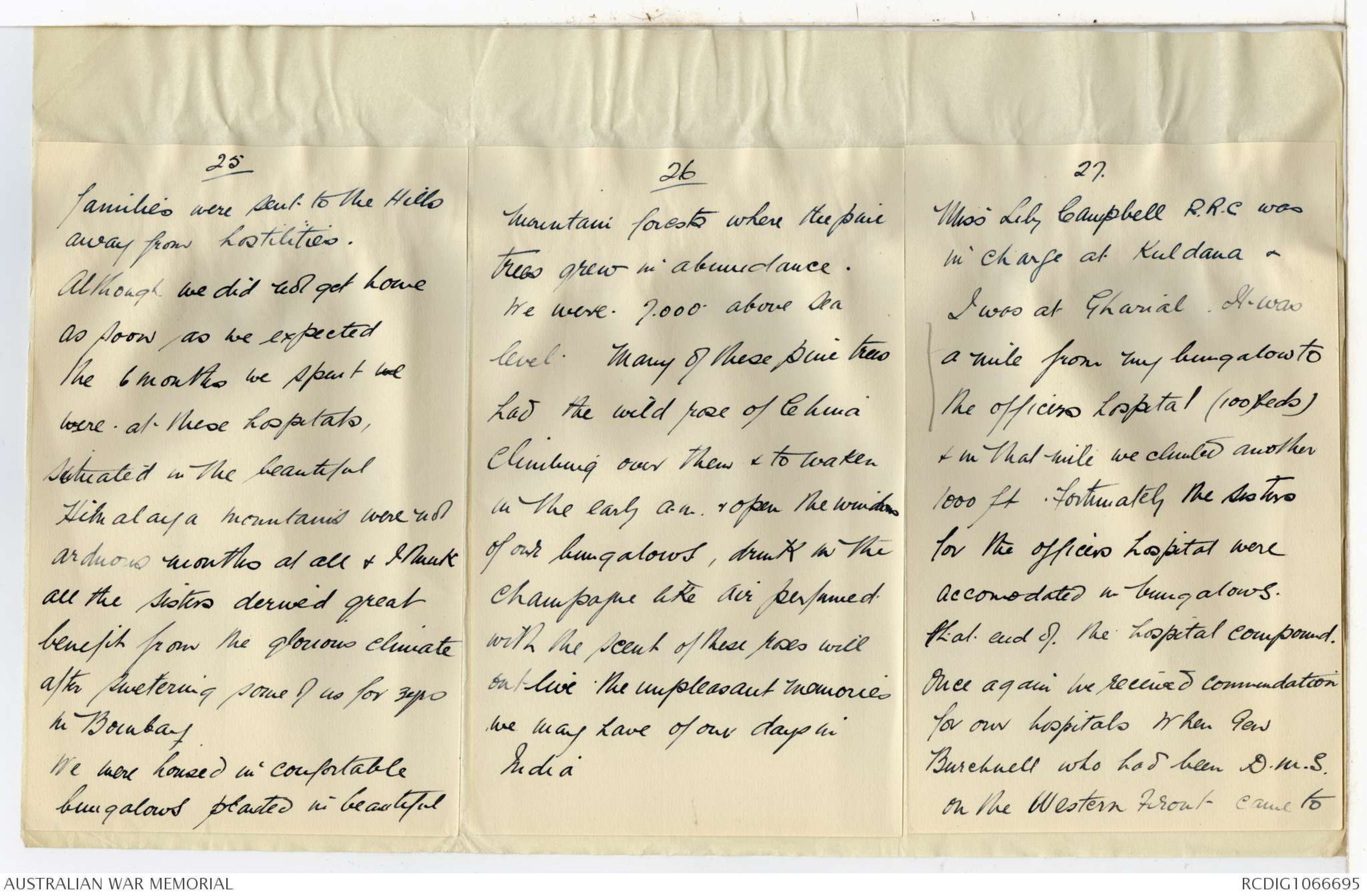
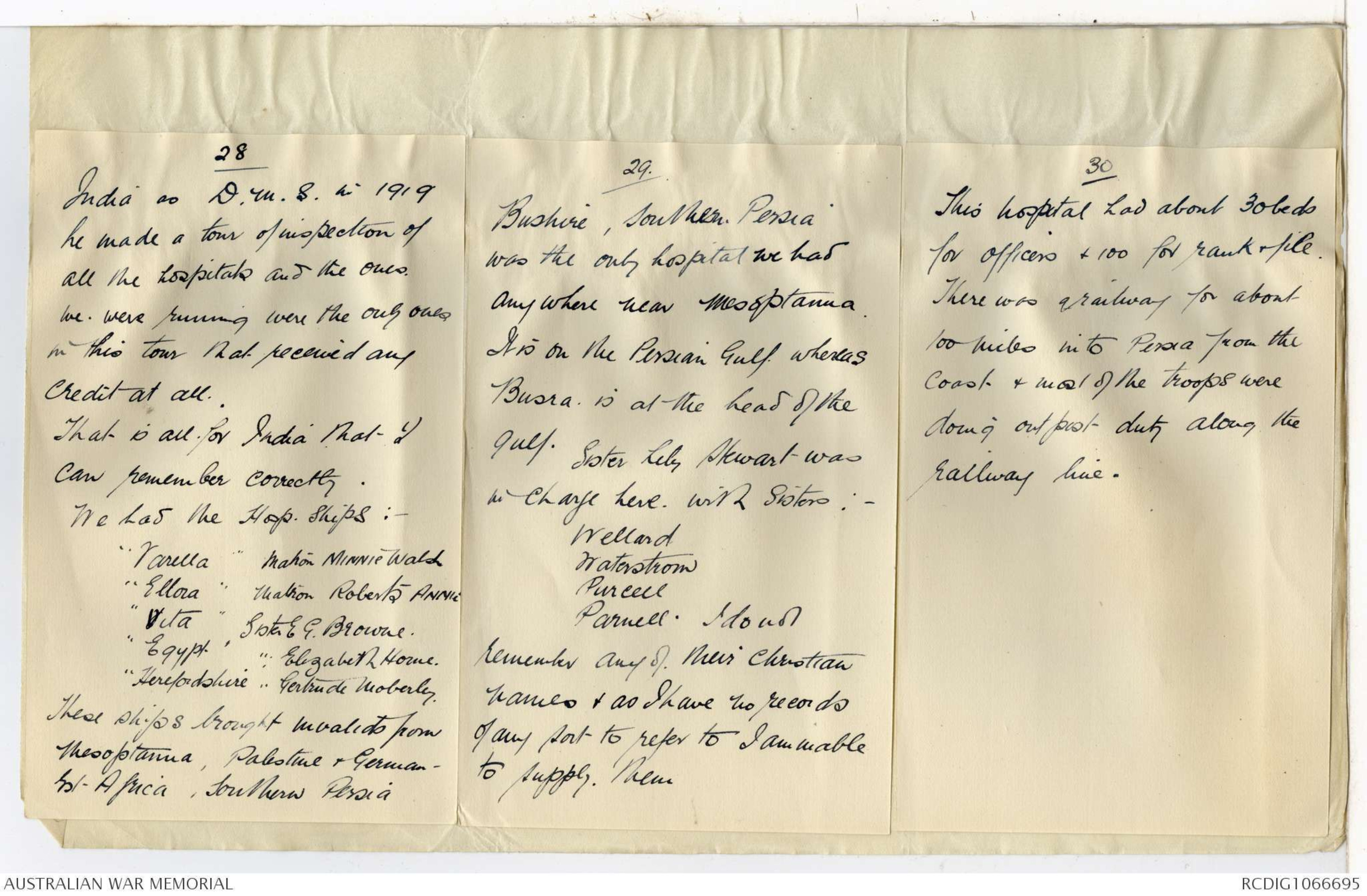
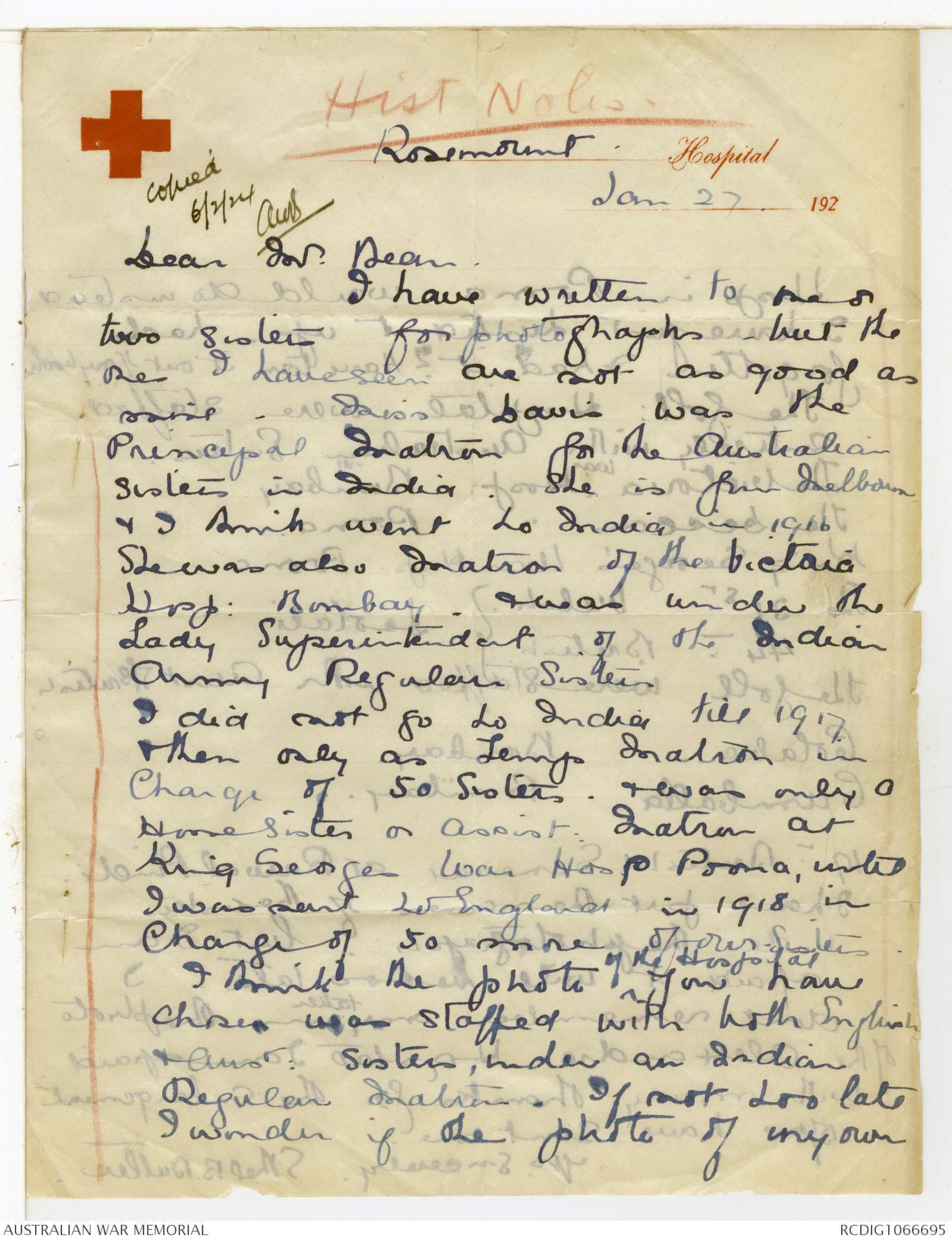
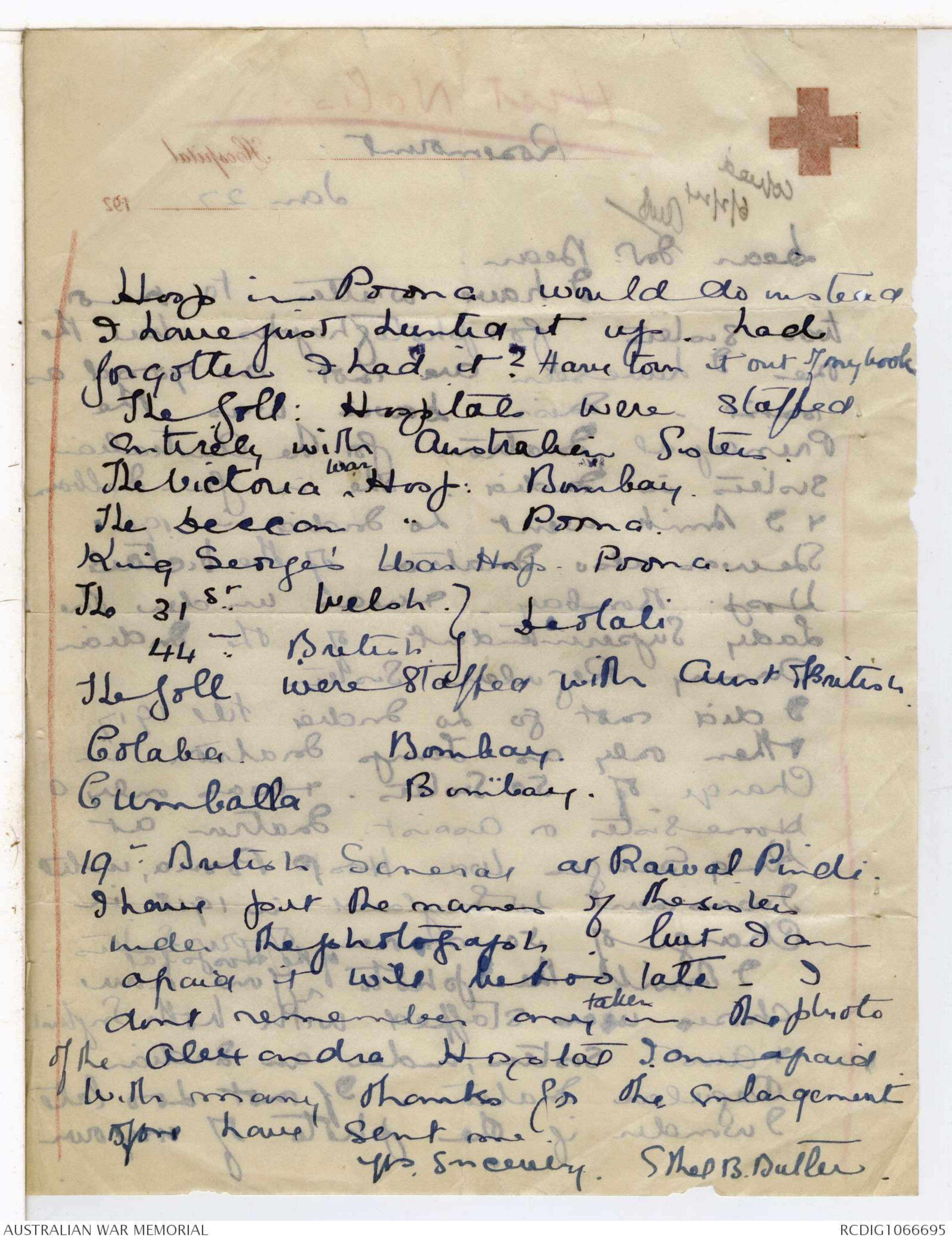


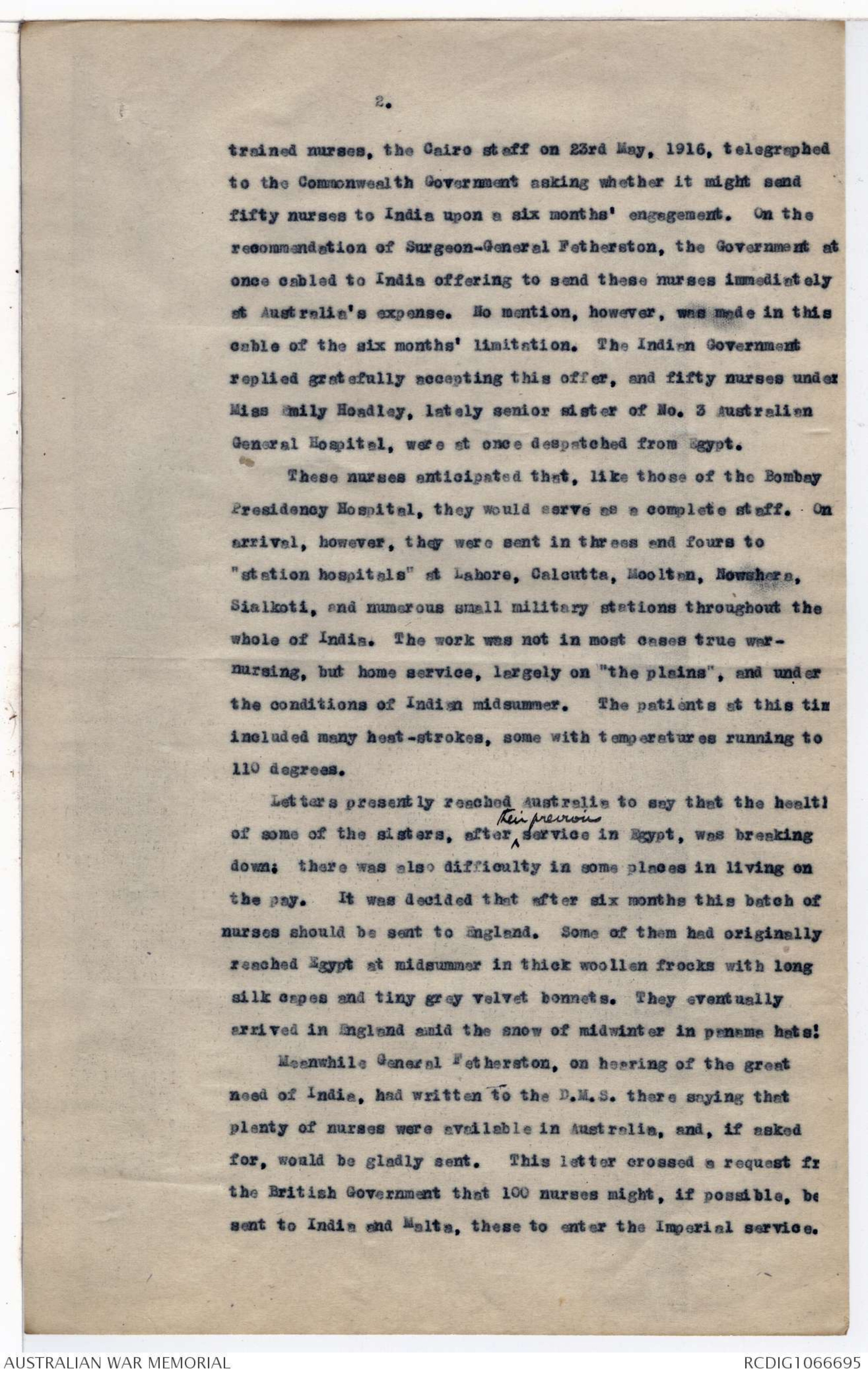
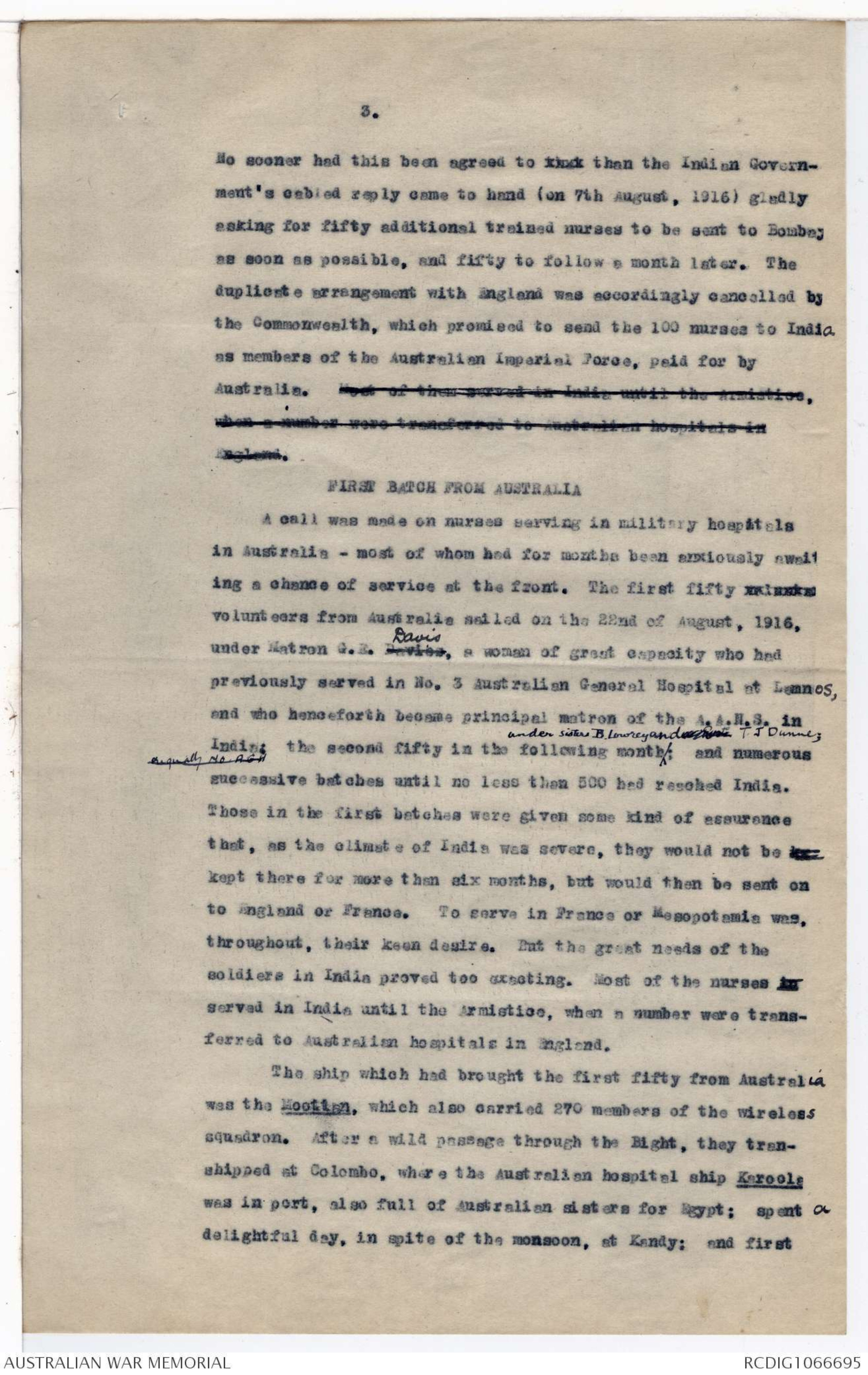

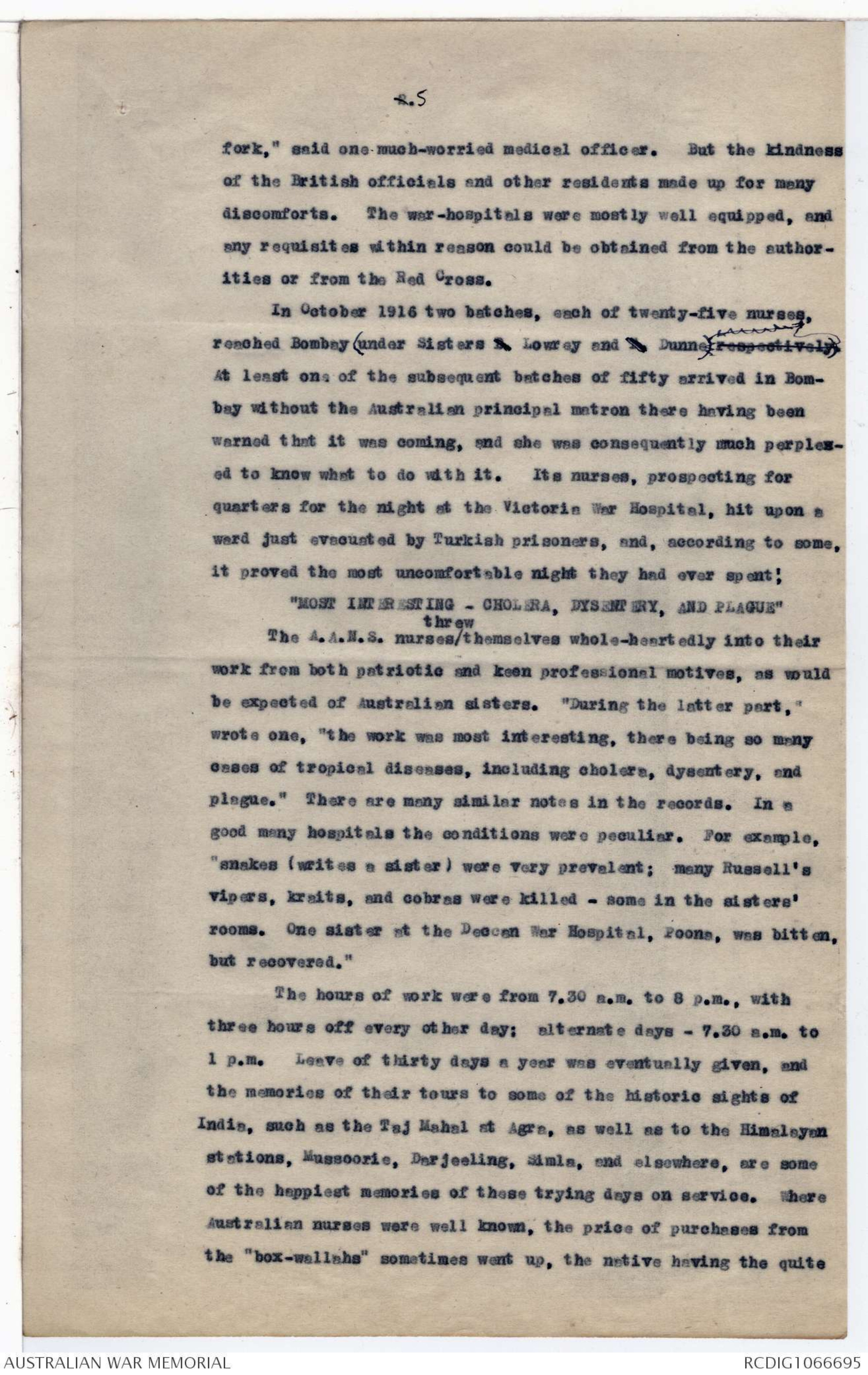
25
families were sent to the Hills
away from hostilities.
Although we did not get home
as soon as we expected
The 6 months we spent we
were at these hospitals,
situated in the beautiful
Himalaya mountains were not
arduous months at all & I think
all the Sisters derived great
benefit from the glorious climate
after sweltering some of us for 3yrs
in Bombay
We were housed in comfortable
bungalows planted in beautiful
26
mountain forests where the pine
trees grew in abundance.
We were 7.000 above sea
level. Many of these pine trees
had the wild rose of China
climbing over them & to waken
in the early a.m. & open the window
of our bungalows, drink in the
champagne like air perfumed
with the scent of these roses will
outlive the unpleasant memories
we may have of our days in
India
27.
Miss Lily Campbell R.R.C was
in 'charge at Kuldana &
I was at Gharial. It was
a mile from my bungalow to
the officers hospital (100 beds)
& in that mile we climbed another
1000 ft. Fortunately the sisters
for the officers hospital were
accomodated in bungalows.
that end of the hospital compound.
Once again we received commendation
for our hospitals when Gen
Burchuell who had been D.M.S.
on the Western Front - came to
28
India as D.M. S. in 1919
he made a tour of inspection of
all the hospitals and the ones
we were running were the only ones
in this tour that received any
credit at all.
That is all for India that I
can remember correctly.
We had the Hop. Ships:-
" Yarella " Matron MINNIE WALSH
" Ellora " Matron Roberts ANNIE
" Vita " Sister E.G. Browne.
" Egypt " " Elizabeth Horne.
"Herefordshire " Gertrude Moberly
These ships brought invalids from
Mesoptamia , Palestine & German-
S-Africa, Southern Persia
29.
Bushire, Southern Persia
was the only hospital we had
anywhere near Mesoptanna.
It is on the Persian Gulf whereas
Busra is at the head of the
gulf.
Sister Lily Stewart was
in charge here with 2 Sisters.
Wellard
Waterstrom
Purcell
Parnell. I do not
remember any of. their Christian
names & as I have no records
of any sort to refer to I am unable
to supply. them
30
This hospital had about 30 beds
for officers & 100 for rank & file.
There was railway for about
100 hubs into Persia from the
Coast & most of the troops were
doing out post duty along the
railway line.
Hist Notes.
Rosemount Hospital
Jan 27 192
[*copied
6/2/24
CEWB*]
Dear Mr. Bean
I have written to one or
for photographs but the
ones I have seen are not as good a
some - Miss Davis was the
Principal Matron for the Australian
sisters in India. She is from Melbourne
& I think went to India 1916
She was also Matron of the Victoria
Hosp. Bombay & was under the
Lady Superintendent of the Indian
Army Regular Sisters
I did not go to India till 1917
& then only as temp Matron in
charge of 50 Sisters. & was only a
Home Sister or Assist: Matron at
King George War Hosp Poona, until
I was sent to England in 1918 in
charge of 50 [[?]] of our Sisters.
I think the photo of the hospital you have
chosen was staffed with north English
& Aust. sisters, under an Indian
Regular Matron. If not too late
I wonder if the photo of my own
Hosp in Poona would do instead
I have just [[dented?]] it up had
forgotten I had it? Have torn it out of my book
The Goll. Hospitals were staffed
entirely with Australian Sisters.
The Victoria ^War Hosp. Bombay.
The Deccan " Poona
King George's War Hosp. Poona
The 31st Welsh. )
44 British ) [Deolali?]
The goll were staffed with Aust & British
Colaba Bombay
Cumballa Bombay
19 British General at Rawal Pindi.
I have put the names of sisters
under the photograph but I am
afraid it will be too late - I
dont remember any taken - the photo
of he Alexandra Hospital I am afraid
With many thanks for the enlargement
you have sent me
Yrs. sincerely. Ethel. B. Butler
Aust. Nurses who died in India.
One muse died. S/n. L. G. Moreton of enteric 11-11-16
Twenty nurses married and remained in India
Sisters AB O’Grady
& K Power died of Cholera.
1st Contingt 50 from EG.
under Miss Emily Hoadley Sev of No 3AGHEG.
THE AUSTRALIAN NURSES IN INDIA, 1916-1919. By C.E.W.Bean
It is not realised in Australia that during the last half
of the war the military hospitals of India were mainly staffed
by Australian nurses. They tended British and netdve Indden
troops ^of the Indian garrison & the Mesopotamian force
they for the first time brought the decencies of
civilisation to large numbers of wounded Turks; they staffed
hospital ships running to Suez, Basra, East Africa, and even
Vladivostok; and they ran & hospital at Bushire in southern
Persia. Three Four of them, Sisters A.R Staff nurses A.V. O'Grady, and K.M. Power, and staff nurse L.G. Moreton ^S/nurse ^Emily Clare lost their lives on service in India.
They were sent in answer to an appeal from the Indian
Government, which was in serious difficulty for the following
reasons. The early months of 1916 found the Indian hospitals,
and still more the medical service in Mesopotamia, inadequately
prepared to receive the great flood of sick and wounded then
beginning to pour back from the Mesopotamian front. So slight
was the accommodation for them in Mesopotamia that, to obtain
treatment, the must serious cases had not only to come the long
journey down the Tigris to Basra (at the head of the Persian
Gulf), but, in very great numbers, were brought down the
Persian Gulf - a voyage of dreadful heat and suffering - right
to Bombay. The Bombay Presidency Hospital, which had previously
been, organised in India for service abroad, was recalled fro
Egypt and established in the splendid new offices of the Great
Indian Peninsular Railway, close to the docks in Bombay - where
it became known as the Victoria War Hospital, and received the
worst cases direct from the hospital ships; but the nurses
from this and other hospitals in India were urgently required 1
staff new hospitals in Mesopotamia , so that the worst xxxxx
cases might in future, if possible, be retained there.
THE FIRST FIFTY
At that time more than 100 Australian nurses in Egypt wer
disengaged in consequence of the movement of the Australian
infantry divisions to France. Learning the need of India for
2.
trained nurses, the Cairo staff on 23rd May, 1916, telegraphed
to the Commonwealth Government asking whether it might send
fifty nurses to India upon a six months’ engagement. On the
recommendation of Surgeon-General Fetherston, the Government at
once cabled to India offering to send these nurses immediately
at Australia’s expense. No mention, however, was made in this
cable of the six months' limitation. The Indian Government
replied gratefully accepting this offer, and fifty nurses under
Miss Emily Hoadley, lately senior sister of No. 3 Australian
General Hospital, were at once despatched from Egypt.
These nurses anticipated that, like those of the Bombay
Presidency Hospital, they would serve as a complete staff. On
arrival, however, they were sent in threes and fours to
"station hospitals" at Lahore, Calcutta, Mooltan, Nowshers,
Sialkoti, and numerous small military stations throughout the
whole of India. The work was not in most cases true war -
nursing, but home service, largely on "the plains", and under
the conditions of Indian midsummer. The patients at this tim
included many heat-strokes, some with temperatures running to
110 degrees.
Letters presently reached Australia to say that the health
of some of the sisters, after, ^their previous service in Egypt, was breaking
down: there was also difficulty in some places in living on
the pay.. It was decided that after six months this batch of
nurses should be sent to England. Some of them had originally
reached Egypt at midsummer in thick woollen frocks with long
silk capes and tiny grey velvet bonnets. They eventually
arrived in England amid the snow of midwinter in panama hats!
Meanwhile General Fetherston, on hearing of the great
need of India, had written to the D.M.S. there saying that
plenty of nurses were available in Australia, and, If asked
for, would be gladly sent. This letter crossed a request fr
the British Government that 100 nurses night, if possible, be
sent to India and Malta, these to enter the Imperial service.
3.
No sooner had this been agreed to xxx than the Indian
Government's cabled reply come to hand (on 7th August, 1916) gladly
asking for fifty additional trained nurses to be sent to Bombay
as soon as possible, and fifty to follow a month later. The
duplicate arrangement with England was accordingly cancelled by
the Commonwealth, which promised to send the 100 nurses to India
as members of the Australian Imperial Force, paid for by
Australia. Most of them served in India until the Armistice,when a number were transferred to Australian hospitals in England.
FIRST BATCH FROM AUSTRALIA
A call was made on nurses serving in military hospitals
in Australia - most of whom had for months been anxiously
awaiting a chance of service at the front. The first fifty xxxxx
volunteers from Australia sailed on the 22nd of August, 1916,
under Matron G.E. Davies Davis, a woman of great capacity who had
previously served in No. 3 Australian General Hospital at Lemnos,
and who henceforth became principal matron of the A.A.N.S. in
India; the second fifty in the following month: ^under Sister B Lowrey and T.H Dunne; and numerous
successive batches until no less then 500 had reached India.
Those in the first batches were given some kind of assurance
that, as the climate of India was severe, they would not be xxx
kept there for more then six months, but would then be sent on
to England or France. To serve in France or Mesopotamia was,
throughout, their keen desire. But the great needs of the
soldiers in India proved too exacting. Most of the nurses or
served in India until the Armistice, when a number were
transferred to Australian hospitals in England.
The ship which had brought the first fifty from Australia
was the [[Mootign?]], which also carried 270 members of the wireless
squadron. After a wild passage through the Bight, they
transhipped st Colombo, where the Australian hospital ship Karoola
was in port, also full of Australian sisters for Egypt; spenta
delightful day, in spite of the monsoon, at Kandy; and first
4.
saw the lights of Bombay on the night of 12th September, 191.
In drenching rain next day they disembarked. The staff sen
them at once to three hospitals - Colaba War Hospital, Cumba
Hospital, and the Taj Mahal Hotel, then used as a hospital.
In what looked like a board room at the Taj Mahal, Miss
Dunwoodie, the Lady Superintendent, Q.A.I.M.N.S. (Queen AlexandIndian Imperial Medical Nursing Service) for Bombay, explained a
perplexing maze of rules and regulations. Later in the day
suppressed excitement became apparent in the hotel. Cholera
was then rampant, several medical men and sisters having
succumbed, including two Australians from Egypt, Sisters
O’Grady and Power. It now became known that another case had
occurred at the hotel, and the place was ^to be at once vacated.
Just at this juncture the British nurses of the Victoria
War Hospital were ordered to Mesopotamia, and Miss Davies Davis was
appointed matron with a staff of Australian nurses. The
British matron was too ill to give any information even to t
new matron; eighteen of the British service nurses left nex
day for Mesopotamia, and the remainder the following week.
The hospital was left in the hands of forty newly-arrived
Australians (not one of whom could speak a word of Hindustani,
or knew the duties of the numerous native servants, who for
their part could not speak English) and ten other nurses,
mostly Eurasians, and only part of them trained.
"WITH A KNIFE, SPOON, AND FORK:"
The military hospitals were, roughly speaking of two xx
kinds - the old station hospitals, usually of 100 or 150 bed
maintained by the Indian Government at its cantonments; and
the big war-hospitals (sometimes expanded from station
hospitals), at which the casualties from the front were treated.
The station hospitals were often in very hot districts, and
the traditional economy of the Indian Government had resulte
in their being very poorly equipped. I sometimes think th
the Government expects me to operate with a knife, spoon, an
5.
fork," said one much-worried medical officer. But the kindness
of the British officials and other residents made up for many
discomforts. The war-hospitals were mostly well equipped, and
any reguisites within reason could be obtained from the
authorities or from the Red Cross.
In October 1916 two batches, each of twenty-five nurses,
reached Bombay (under Sisters A Lowrey and S Dunne respccttvely
At least one of the subsequent batches of fifty arrived in
Bombay without the Australian principal matron there having been
warned that it was coming, and she was consequently much perplexed
to know what to do with it. Its nurses, prospecting for
quarters for the night at the Victoria War Hospital, hit upon a
ward just evacuated by Turkish prisoners, and, according to some,
it proved the most uncomfortable night they had ever spent!
"MOST INTERESTING - CHOLERA, DYSENTERY, AND PLAGUE"
The A.A.N.S. nurses ^threw themselves whole-heartedly into their
work from both patriotic and keen professional motives, as would
be expected of Australian sisters. "During the latter part,"
wrote one, "the work was most interesting, there being so many
cases of tropical diseases, including cholera, dysentery, and
plague." There are many similar notes in the records. In a
good many hospitals the conditions were peculiar. For example,
"snakes (writes a sister) were very prevalent; many Russell’s
vipers, kraits, and cobras were killed - some in the sisters'
rooms. One sister at the Deccan War Hospital, Poona, was bitten,
but recovered."
The hours of work were from 7.30 a.m. to 8 p.m., with
three hours off every other day; alternate days - 7.30 a.m. to
1 p.m. Leave of thirty days a year was eventually given, and
the memories of their tours to some of the historic sights of
India, such as the Taj Mahal at Agra, as well as to the Himalayan
stations, Musscorie, Darjeeling, Simla, and elsewhere, are some
of the happiest memories of these trying days on service. Where
Australian nurses were well known, the price of purchases from
the "box-wallahs" sometimes went up, the native having the quite
 Sam scott
Sam scottThis transcription item is now locked to you for editing. To release the lock either Save your changes or Cancel.
This lock will be automatically released after 60 minutes of inactivity.